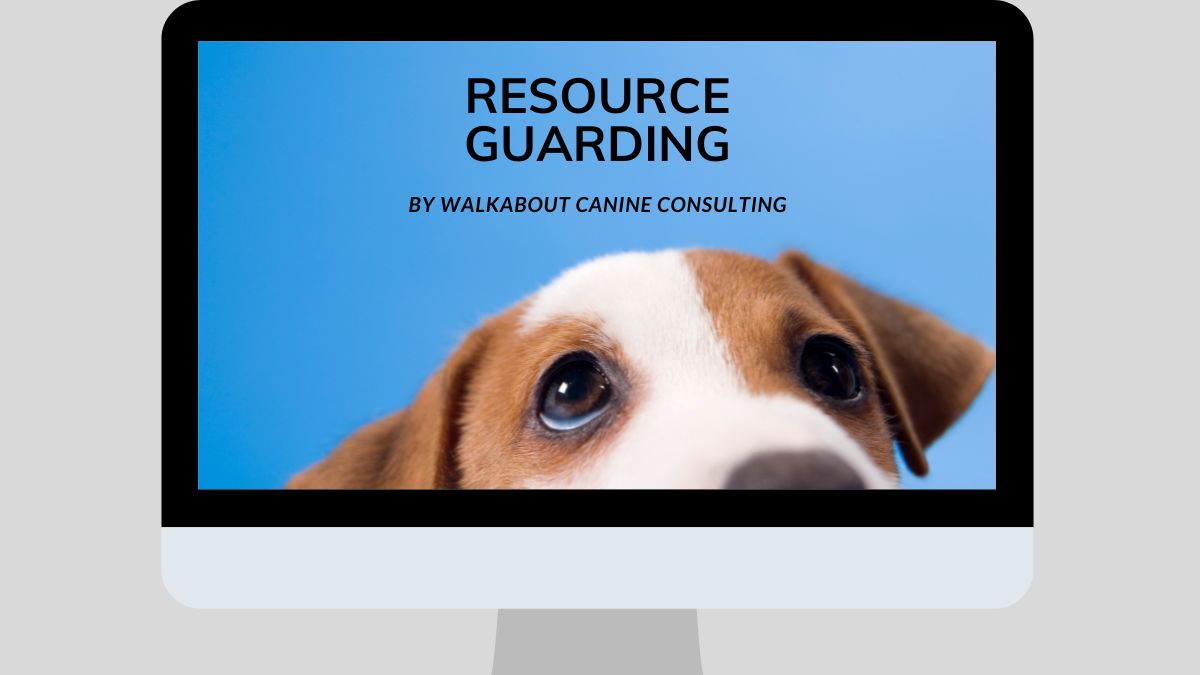Positive Dog Training & Behaviour Blog | Walkabout Canine Consulting
Unleashing your dogs potential, one concept at a time
What should we know about Resource Guarding in Dogs

Understanding Resource Guarding
Resource guarding in dogs can be unpredictable, with various triggers that may set off guarding behaviour. While some dogs may guard their food or toys, others may guard spaces or even people. The intensity of guarding behaviour can also vary from dog to dog and can change based on factors like stress, health, or environmental changes. This unpredictability can make managing and addressing resource guarding challenging.
The Impact of Guardian Behaviour on Resource Guarding
The unpredictability of a guardian's behaviour can exacerbate resource-guarding issues in dogs for several reasons:
- Increased Anxiety: Dogs are sensitive to their owners' emotions and reactions. Inconsistent or unpredictable responses from the guardian can cause the dog to become more anxious or uncertain, potentially heightening guarding behaviour.
- Confusion: Dogs rely on clear communication and consistent boundaries. If a guardian's response to resource guarding varies, the dog may become confused about acceptable behaviour, making it harder to address the issue.
- Reinforcement of Guarding Behaviour: Inconsistent responses may inadvertently reinforce guarding behaviour. For example, if the guardian sometimes rewards the dog for relinquishing an item while at other times punishes or ignores the behaviour, the dog may not learn a clear association between giving up the item and receiving a positive outcome.
- Lack of Trust: Dogs look to their guardians for guidance and security. Unpredictable or threatening behaviour from the guardian during resource-guarding episodes can erode trust and escalate the guarding behaviour as a means of self-preservation.
The Importance of Positive Interactions and Reinforcement
Positive interactions and reinforcement are key to changing our predictability, increasing confidence, and boosting positive emotions in our dogs. By using these approaches consistently, we can transform worried and upset dogs into happy and confident companions. Here's how:
- Establishing Trust: Predictable, positive responses help build trust between the dog and their guardian. When the dog knows what to expect and associates these expectations with positive outcomes, they are more likely to feel safe and secure, reducing anxiety and defensiveness.
- Consistent Training: Positive reinforcement allows for consistent training methods. By implementing a structured plan with predictable, rewarding routines and responses, the dog can learn and understand expected behaviours.
- Clear Communication: Positive interactions facilitate clear communication. When guardians consistently reinforce desired behaviours and set clear, positive boundaries, the dog can more easily understand what is expected and feel motivated to comply.
- Reducing Stress: Positive reinforcement minimizes uncertainty and stress. Dogs thrive in environments where they can anticipate outcomes and understand that positive behaviours lead to positive results. This helps alleviate the stress that can trigger guarding behaviour.
- Building Confidence: Positive reinforcement allows the dog to feel more confident in their interactions. Understanding how their guardian will respond to resource guarding helps them feel secure in relinquishing control of resources, knowing that they will be rewarded.
In Summary:
Positive interactions and reinforcement create a stable and supportive environment for dogs to learn and overcome resource-guarding behaviour. By providing consistent, positive responses and clear expectations, guardians can help their dogs feel safer, more confident, and ultimately more willing to relinquish control of valuable resources.
Categories: : behaviour modification, dog resource guarding reason, dog training, canine behaviour, resource guarding in dogs, understanding resource guarding in dogs
 Sylvia Koczerzuk Koczerzuk
Sylvia Koczerzuk Koczerzuk 
